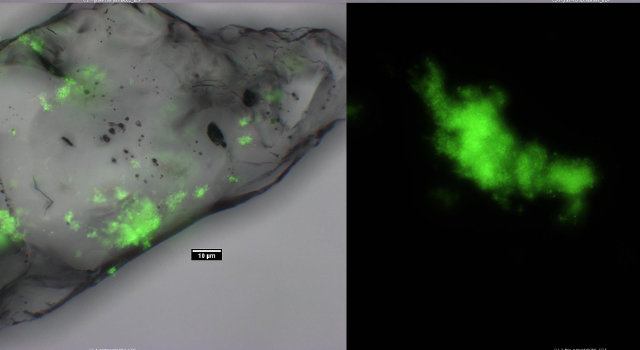Dynamic changes in microbial community structure and function in phenol-degrading microcosms inoculated with cells from a contaminated aquifer
Contamination of aquifers by organic pollutants threatens groundwater supplies and the environment. In situ biodegradation of organic pollutants by microbial communities is important for the remediation of contaminated sites, but our understanding of the relationship between microbial development and pollutant biodegradation is poor. A particular challenge is understanding the in situ status of microorganisms attached to solid surfaces, but not accessible via conventional sampling of groundwater. We have developed novel flow-through microcosms and examined dynamic changes in microbial community structure and function in a phenol-degrading system.
Inoculation of these microcosms with a complex microbial community from a plume in a phenol-contaminated aquifer led to the initial establishment of a population dominated by a few species, most attached to the solid substratum. Initially, phenol biodegradation was incomplete, but as the microbial community structure became more complex, phenol biodegradation was more extensive and complete. These results were replicated between independent microcosms, indicating a deterministic succession of species. This work demonstrates the importance of examining community dynamics when assessing the potential for microbial biodegradation of organic pollutants. It provides a novel system in which such measurements can be made readily and reproducibly to study the temporal development and spatial succession of microbial communities during biodegradation of organic pollutants at interfaces within such environments.
